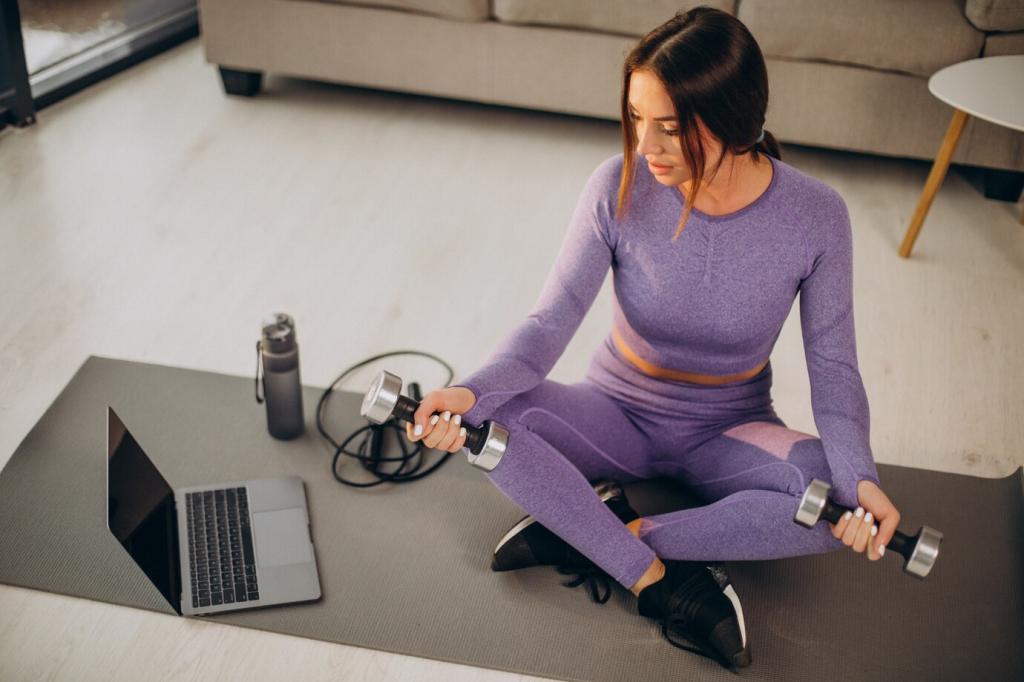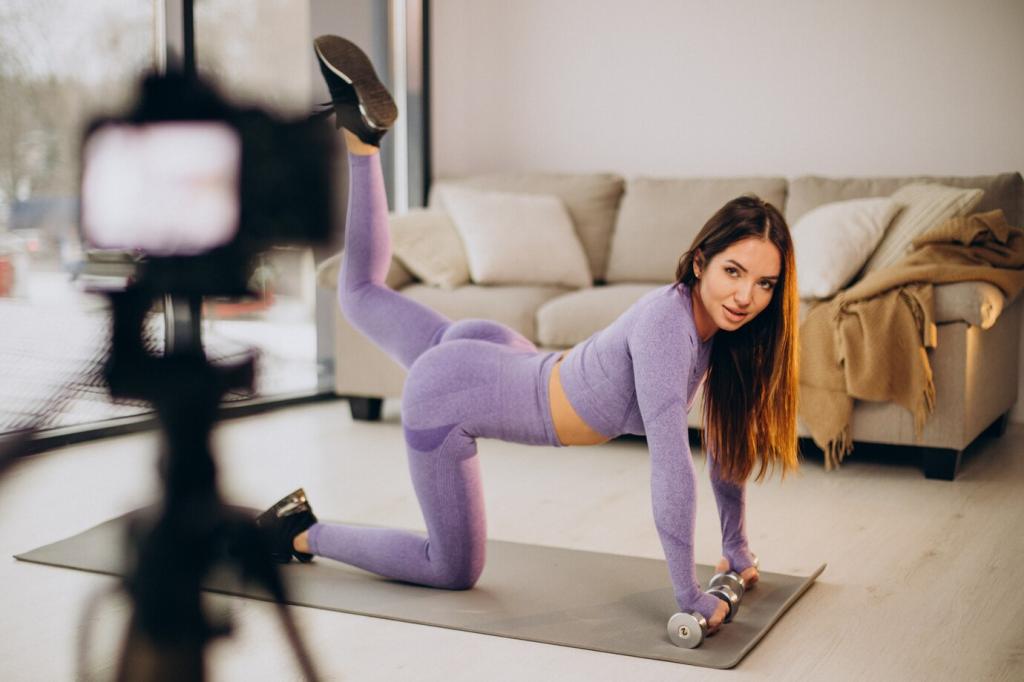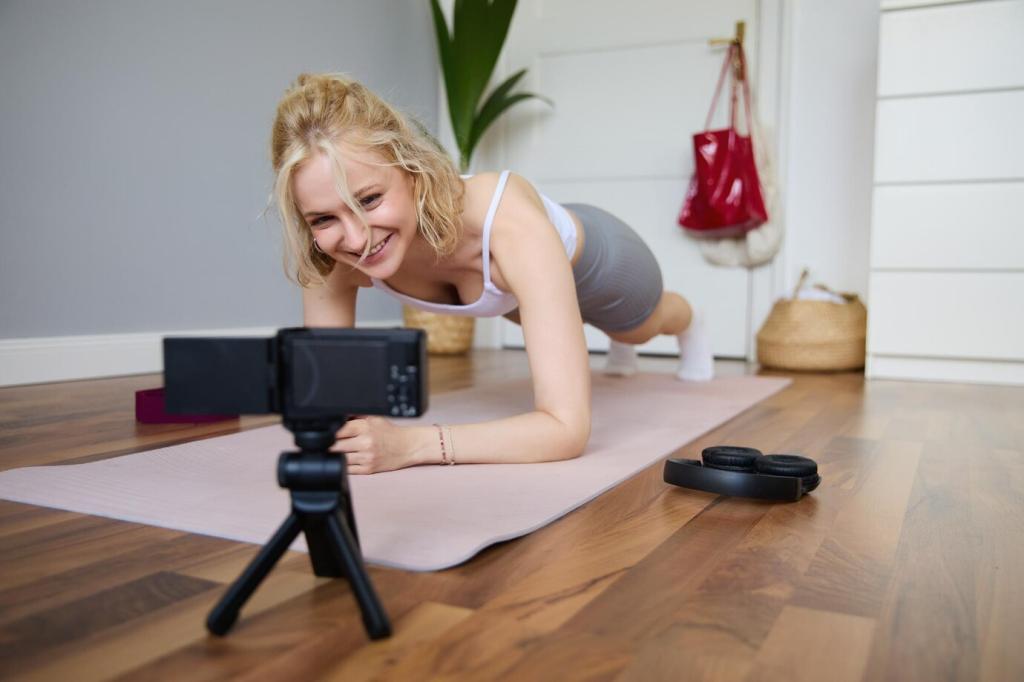Scaling Exercises Smartly
Begin at a wall for alignment, shift to countertop or bench, then incline box, then full floor push‑ups. Add tempo control—three seconds down, one second pause—to raise difficulty without wrecking form. If wrists complain, use dumbbell handles or fists. Comment your current variation and we’ll suggest the next confident step.
Scaling Exercises Smartly
Adjust one dial at a time: shorten intervals, slow pace, choose flatter terrain, or extend recovery to adapt intensity. Use the talk test—a sentence should feel effortful but possible for moderate work. Climbs and sprints suit advanced days; brisk walks and cycles fit foundations. Share your favorite dial and why it works for you.








